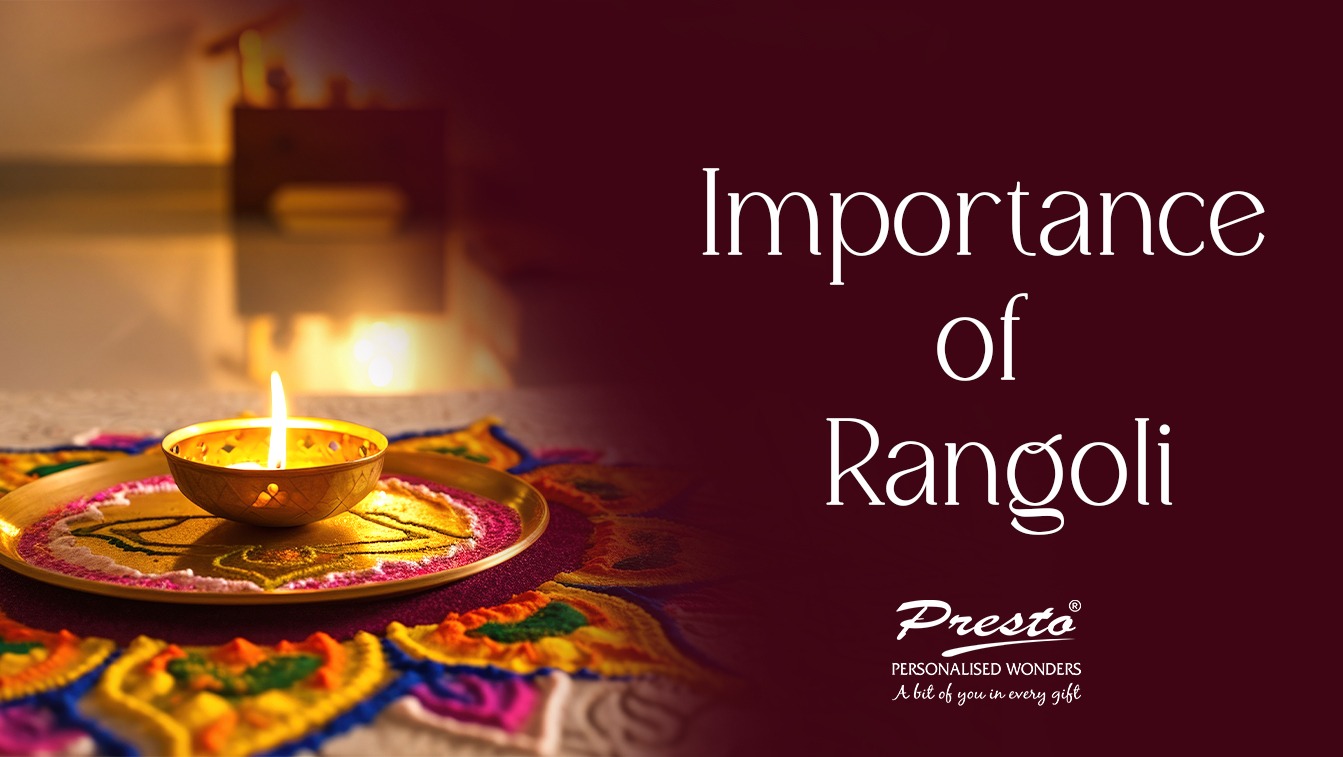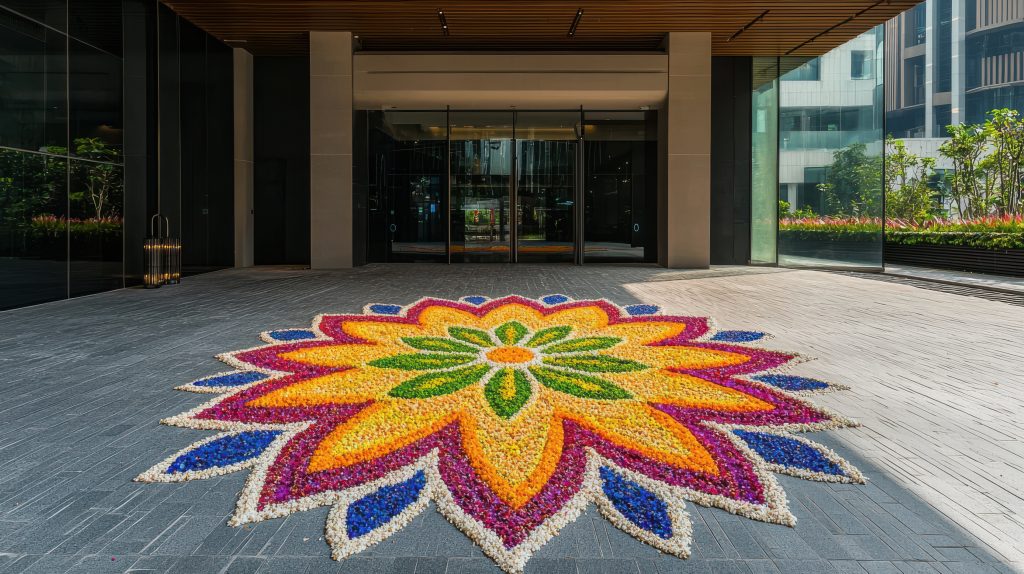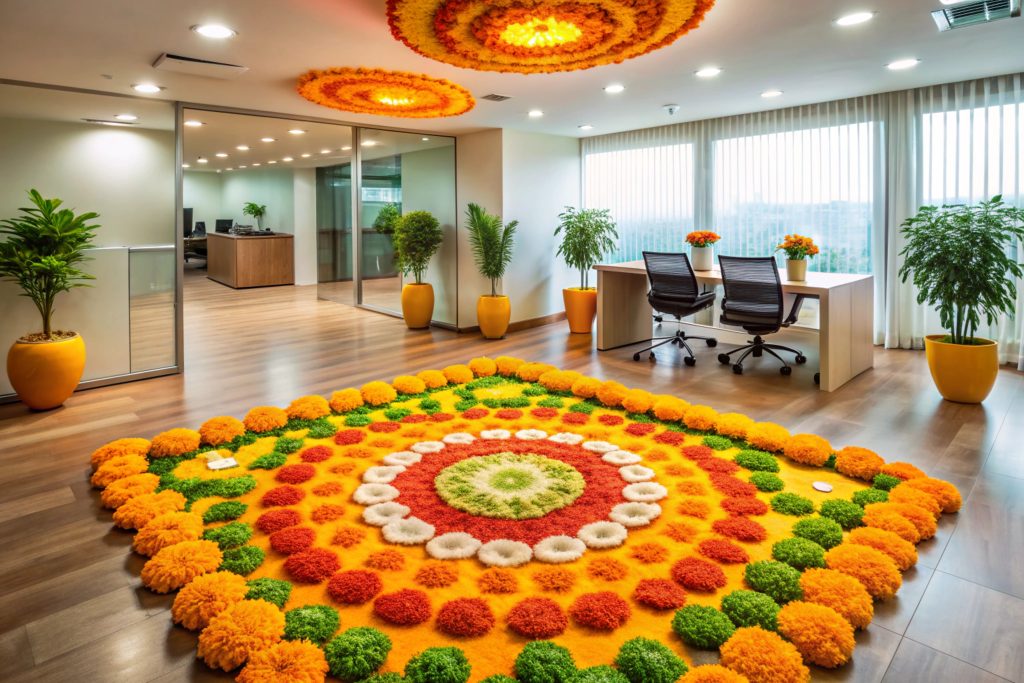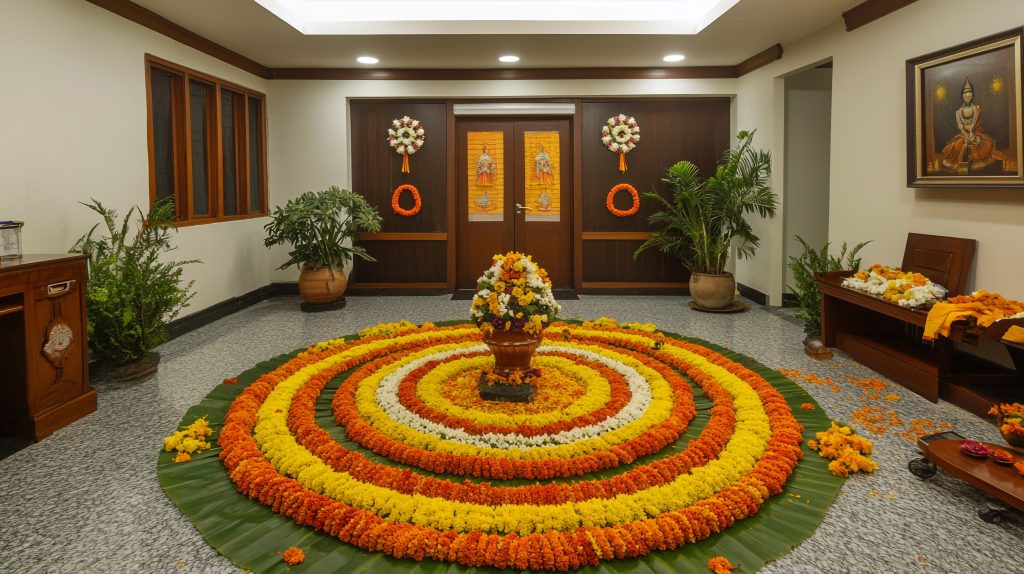
- 21 October 2024
- Presto Admin
- 0
Rangoli is an Indian art form practiced since ancient times, creating various art forms using a variety of materials and designs on the floor. Rangoli art form is still practised all over India on different occasions.
Rangoli word originates From the Sanskrit words rang and avali, which mean rows of colours, is drawn on the entrance of the house and filled with colors during festivals and rituals and created by fingers using various materials traditionally flower petals, rice powder, and mostly synthetic colours are used in today’s time.
In a culturally diverse country like India, rangoli is a common way to to celebrate festivals and spread happiness. In ancient times, Rangoli for the first time created by Lopamudra (the wife of Aagastya Muni) around the yagyakund to impress the deities.
Diwali is the celebration of light that kicks off by cleaning up the house and decorating the house with various lighting and decorative items, and the entrance of the house is adorned by beautiful Rangoli.
Rangoli making at the entrance of the house holds a vital part of Diwali celebrations. In this blog, we will delve into the importance of Rangoli in Diwali celebrations. Please have a look!

Importance of Rangoli for Diwali Celebrations
To embrace and attract Wealth and Prosperityeading Text Here
Rangoli drawn on Diwali symbolises the welcoming of Goddess Laxmi to bring prosperity, wealth, and joy into our homes. Welcoming Maa Laxmi with beautiful Rangoli is considered auspicious. Not only at the entrance but in the pooja ghar and temples where puja rituals are performed. It’s an offering to God that creates a positive religious atmosphere.
Rangoli as a Cultural Expression
The vibrant and radiant colorful patterns of Rangoli are believed to bring good luck and take away all negative energy ensuring positive vibrations and peace within the home. This brings a lot of good luck to the home.
Rangoli Brings Unity and Inclusivity
Creating rangoli together with friends and family that is often a group activity, bringing families, friends, and communities together, and fostering the spirit of togetherness, fun, laughter, and festivity in the house.

Vibrant Colours of Life
The bright, vibrant colors used in rangoli symbolize the celebration of life, reflecting the positivity and uplifting energy of Diwali. All of the different colors that we use in Rangoli symbolize different things; for instance, white symbolizes peace, black represents stability, and so on.
Therefore, here we holistically discussed the relevance of Rangoli for Diwali Celebrations. One of the famous stories regarding Ramayanis is that when Maa Sita fell in love with Lord Ram, she created rangoli and prayed to the Goddess Gauri to grant Lord Ram as her husband.
Rangoli is not merely seen as a decorative but a thoughtful and meaningful tradition that enhances the significance of Diwali. In India, people from all cultures, castes, and creeds come together to celebrate Diwali with full enthusiasm. Rangoli making during Diwali takes the zeal to the next level and fosters a deep connection among the family members.
Celebrate Diwali 2024, show your artistic side, and create the most vibrant, radiant, and the best Diwali rangoli together with your family.
Presto wishes you and your family a very Happy Diwali!
